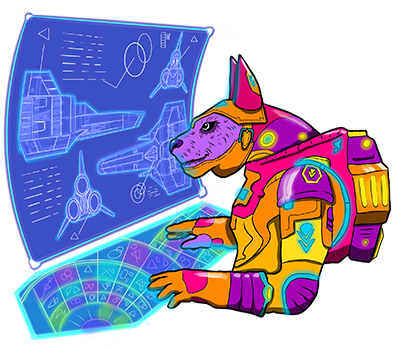Communication is the most important skill for a team leader to have. And it’s not just me saying it; hundreds of executives and project professionals said so in the latest PMI Pulse of the Profession report (PMI, 2023). Yes, of course, there are many other power skills that will help you make your team highly successful, such as problem-solving, collaboration, strategic thinking, adaptability, empathy, etc. However, I can guarantee that all those other skills fall under the ability to communicate.

Powering Up Team Communication
I’m sure that if I ask you about a problem that could have been avoided with a simple conversation or request for help, several examples will probably come to mind. Unfortunately, organizations still do not invest enough effort or money into the development of communication skills as opposed to technical competencies. In the absence of formal training to enhance communication skills, learning will happen through problem-solving, which isn’t bad either; if you have a bad experience, you will want to make sure it doesn’t happen again, so you’ll take a different approach. However, my goal is to help others anticipate situations that may cause problems. Here are some things that have worked for my team.
Set up organized and logical communication channels:

- Create all the necessary communication spaces and make sure they are logical and organized. Name them using an easy-to-understand format or internal code. Share the logic behind channel names with your entire organization so everyone in the loop respects the established structure.
- Avoid creating dozens of Slack or MS Teams channels for every new project or task. Before doing that, check what you already have; there must be something that fits your purpose, and if there’s not, you might need to reconsider the scope of your interaction spaces and make them a little broader.
- Make sure to add descriptions to all your channels so it will be easier for you to remember the logic behind each one.
- Refrain from creating a private chat (DM) every time you need to start a new topic just because it’s quicker than sending the message through a channel or subchannel. Keep DMs for highly sensitive topics and promote the use of open channels for daily interactions; you never know when it may serve multiple purposes and help colleagues deal with the same issue.
- Be mindful of those long never-ending chats that are the single repository of all your knowledge. Not everything needs to be in a chat, make use of other tools, such as loops, SharePoint, databases, folder structures, lists. Make the best of the tools your organization owns or allows but centralize.
Guarantee a fluent dialogue

- Promote an open dialogue from day one of the onboarding process. You can do this by including action items in a new employee’s training, encouraging them to say “Hi” to specific people from different teams, and directing questions to people they don’t usually interact with.
- Facilitate interaction, communication, and support among members of different teams to prevent risks generated by a lack of familiarity with others. This helps build bridges of communication that would otherwise be very difficult to establish.
- Emphasize the importance of active listening. Encourage team members to listen attentively, understand others’ perspectives, and respond thoughtfully. Active listening fosters mutual understanding, trust, and collaboration, enhancing overall communication effectiveness. One way to show that you are paying attention and understand is to repeat or rephrase what the other person said (just a tip😅).
Promote cross cultural or multidisciplinary collaboration
- Mix working teams: the more multicultural, diverse and multidisciplinary the better.
- When you gather all stakeholders affected positively or negatively by a given situation, you guarantee that the solution or agreement reached will consider all sides and risks involved. This principle is drawn from the Last Planner System, which was created as a lean solution for the construction industry but can easily be applied to the way our industry manages tasks. I strongly recommend taking a closer look at it.
- If you are the only person responsible for making all decisions, without consulting with the actual executors or last planners, you will only have a limited view of the situation, and your solution might face unexpected risks so make sure to implement a comprehensive communication system across all actors.
Plan and assess your communication strategy

- As instructed by the PMBOK Guide Seventh edition (PMI, 2021) start by identifying stakeholders and understanding their needs. This initial step lays the foundation for effective communication by ensuring that you understand who your audience is and what they require from you.
- Then, think about who needs what information and why, and tailor your communication accordingly. Understanding your audience’s unique needs and preferences fosters engagement and cooperation.
- Keep your objectives in mind. Sometimes we get caught up in the heat of the moment and lose sight of our real goals by prioritizing being right or having the last word. So, take a moment and remember what you really need to solve.
The Takeaway
Effective communication isn’t about talking louder to make sure everyone listens; it’s about understanding, organizing, and staying focused on the bigger picture. A good communication plan serves as your roadmap, keeping everyone on track and preventing unnecessary roadblocks. When teams communicate well, they work better together, building trust and ultimately succeeding. By considering stakeholders and delivering messages that resonate, you not only improve project outcomes but also strengthen relationships, creating an environment of openness and accountability. So, remember, communication isn’t just a skill; it’s the key to effective leadership and successful projects.
About the author:

Angie Tapia is a professional in translation, localization, project management and language services. She holds a Bachelor of Arts in Translation and Interpreting and a Master’s in Administration and Project Management. Her career includes a pivotal role as the Head of Language Services at the Lima 2019 Pan American and Parapan American Games, where she led a team of 50 language services professionals and over 300 volunteers, providing over five million translated words and a thousand hours of interpreting. Angie’s work extends to academia, where she has served as a university professor since 2015. She also brought her passion for innovation and localization to Terra Localizations, where she served as Customer Success Manager, helping shape solutions for the video game industry.



